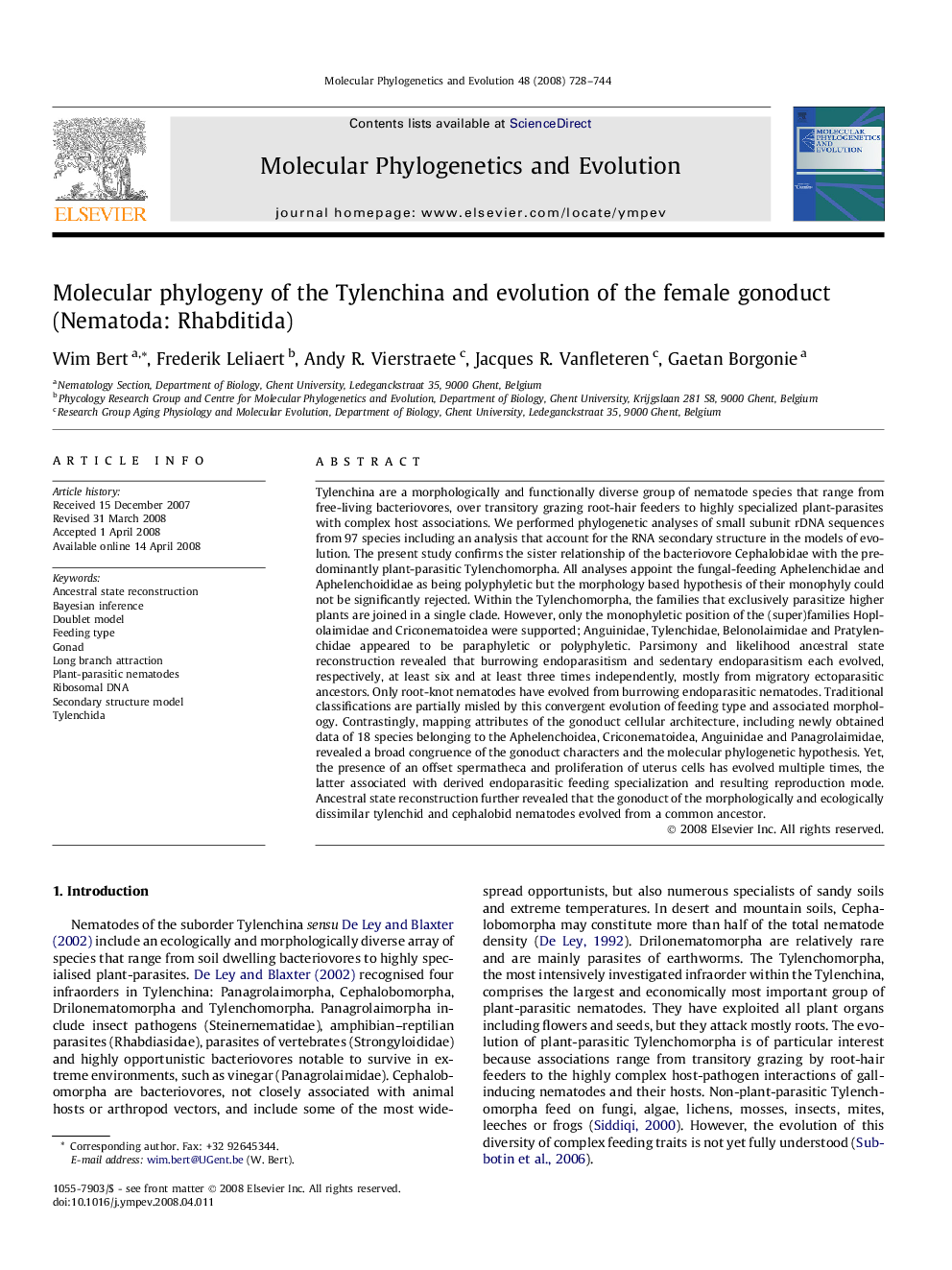| کد مقاله | کد نشریه | سال انتشار | مقاله انگلیسی | نسخه تمام متن |
|---|---|---|---|---|
| 2835096 | 1164332 | 2008 | 17 صفحه PDF | دانلود رایگان |

Tylenchina are a morphologically and functionally diverse group of nematode species that range from free-living bacteriovores, over transitory grazing root-hair feeders to highly specialized plant-parasites with complex host associations. We performed phylogenetic analyses of small subunit rDNA sequences from 97 species including an analysis that account for the RNA secondary structure in the models of evolution. The present study confirms the sister relationship of the bacteriovore Cephalobidae with the predominantly plant-parasitic Tylenchomorpha. All analyses appoint the fungal-feeding Aphelenchidae and Aphelenchoididae as being polyphyletic but the morphology based hypothesis of their monophyly could not be significantly rejected. Within the Tylenchomorpha, the families that exclusively parasitize higher plants are joined in a single clade. However, only the monophyletic position of the (super)families Hoplolaimidae and Criconematoidea were supported; Anguinidae, Tylenchidae, Belonolaimidae and Pratylenchidae appeared to be paraphyletic or polyphyletic. Parsimony and likelihood ancestral state reconstruction revealed that burrowing endoparasitism and sedentary endoparasitism each evolved, respectively, at least six and at least three times independently, mostly from migratory ectoparasitic ancestors. Only root-knot nematodes have evolved from burrowing endoparasitic nematodes. Traditional classifications are partially misled by this convergent evolution of feeding type and associated morphology. Contrastingly, mapping attributes of the gonoduct cellular architecture, including newly obtained data of 18 species belonging to the Aphelenchoidea, Criconematoidea, Anguinidae and Panagrolaimidae, revealed a broad congruence of the gonoduct characters and the molecular phylogenetic hypothesis. Yet, the presence of an offset spermatheca and proliferation of uterus cells has evolved multiple times, the latter associated with derived endoparasitic feeding specialization and resulting reproduction mode. Ancestral state reconstruction further revealed that the gonoduct of the morphologically and ecologically dissimilar tylenchid and cephalobid nematodes evolved from a common ancestor.
Journal: Molecular Phylogenetics and Evolution - Volume 48, Issue 2, August 2008, Pages 728–744